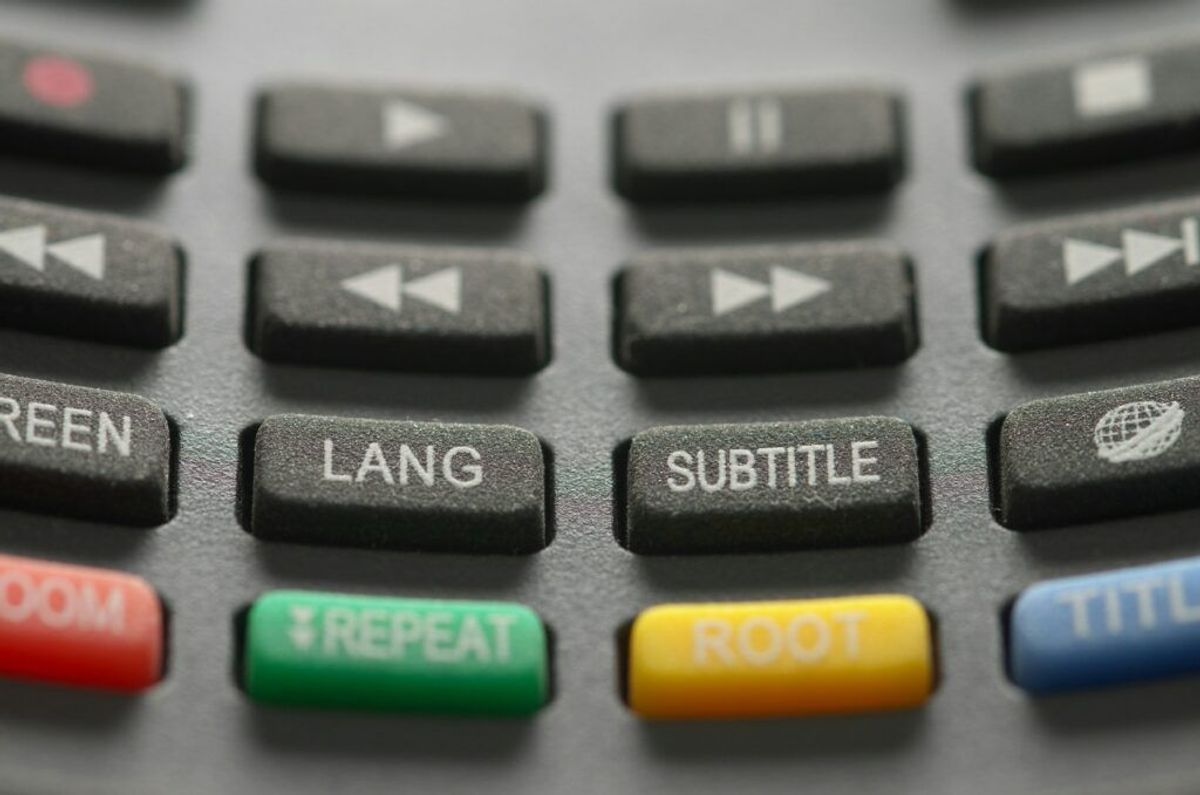
Photo: Immo Wegmann/Unsplash
Reading and writing form the building blocks of education and dominate primary school teaching.
But despite educators’ relentless focus on developing these skills in every child, the most recent SATs results show many still struggle and more than one in four do not meet expected standards.
It is not just schools that are concerned about the literacy issue
Celebrities ranging from Queen Camilla to Dolly Parton have launched literacy campaigns to support work done in schools.
The latest A-lister to get involved is School of Rock star Jack Black, who posted a video in support of Essex-based campaign group ‘Turn On The Subtitles’ (TotS).
What is the literacy campaign Jack Black is supporting?
TotS proposes turning on subtitles when children are watching TV as a way of improving their literacy.
This way, children can match the written words to the sounds, the visuals and the context. Neat huh?
It seems a simple and elegant solution, but does it actually work?
What do we know about the use of television subtitles to boost literacy?
Let’s take a look at the wealth of research carried out over the last three decades in various contexts and locations across the globe.
In 2010 researchers running a small US study, found that young readers (aged 7-9 years-old) who watched a series of children’s TV shows with subtitles could recognise, read, and understand more words from the programmes that those who watched without subtitles.
More recently, literacy experts working with low-income families in India used eye-tracking tools to discover that children who struggled to read engaged more with subtitles when watching simple stories being told.
Another study reviewed 30 years’ worth of research into the issue.
More than 100 of these studies, many of which involved adults and college students as well as school pupils, documented that subtitles improve comprehension of, attention to and memory for the video content.
So, there you go, it looks like we have an answer to the literacy issue.
Subtitling video content can bridge the gap for children who struggle to engage with text but watch television.
But wait a moment.
Has the case for using subtitles to improve literacy been made?
Before we send out the party invitations, let's be sure about what we're talking about here.
A deeper examination of the data reveals a little more nuance to consider.
Who actually benefits from using TV subtitles as a literacy aid?
Firstly, it is not all children who were seen to benefit from subtitles.
In the 2010 US study mentioned earlier, the effects were greater (but not in a statistically significant way) for those who were lower attaining readers to begin with.
Word recognition improved most for children ‘at risk’ of not acquiring good reading skills (eg from lower socio-economic backgrounds or with parents who have low literacy/education levels).
And while their word recognition improved, their general comprehension did not in the same way.
That shows that while subtitling boosted children’s ability to recognise some of those words later on, it did not enhance their understanding of the words’ meaning to the same extent.
Secondly, the children in the Indian study were engaged when the content was simple and easy to follow but started to drift off when stories became more complex.
That might indicate that the benefits of subtitles work at a low level but erode as the subject becomes more taxing.
And finally, the researcher carrying out the literature review noted that many of the positive studies found subtitles were of particular benefit to children and adults learning to read and those watching content in their non-native language.
In conclusion...
It appears that the largest benefits come for those children who do not otherwise have regular access to printed text or do not have parents able to read to them regularly (whether that is due to their own literacy levels or that they may not read in the language of the child’s education).
So, while reading subtitles should not replace reading books, it may be a great tool to help some children have greater access to reading at home.
READ MORE:
Decoding EAL: What does English as an additional language really mean?
Are reading ages old hat?
On-line and on-demand: The future of assessing numeracy, literacy and digital fluency









